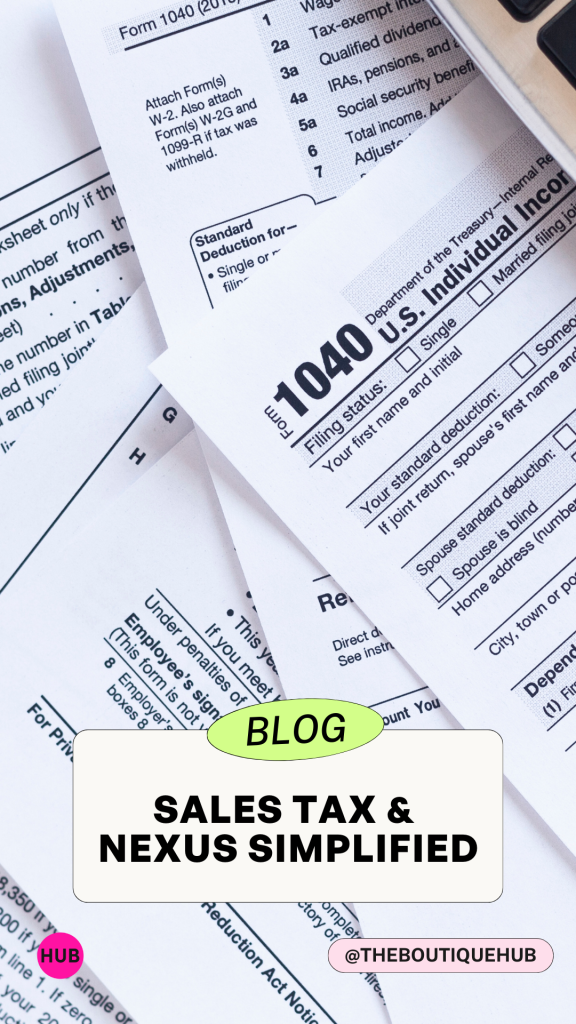Fashion
Sales Tax & Nexus Simplified for Small Businesses

Guest Blog by HarQuin Bookkeeping
Sales tax and nexus can feel overwhelming — you’re not alone! The rules change constantly, and every state does things a little differently. But with the right understanding (and the right team behind you), staying compliant becomes much easier.

Here’s a quick breakdown to help make sense of it all:
Your Role: You’re the Middleman
Think of sales tax this way: The government charges sales tax to your customers — you simply collect it and pass it on.
That means:
- You’re responsible for filing returns
- Filing frequency varies by state (monthly, quarterly, semi-annual, or annual)
- Every state taxes products and services differently
Your job is to collect and remit the tax correctly based on the rules where your customers are located.
Nexus Isn’t a One-Time Check — It’s Ongoing
“Nexus” means you have a significant presence in a state, and once you hit a state’s threshold, you must start collecting sales tax there. Thresholds vary, but many states use:
- 200 transactions, or
- $100,000+ in sales
Nexus can be triggered at any point during the year — not just at year-end — so it’s something to watch continuously.
Physical Presence Isn’t Required
Even if you don’t have employees, offices, or storefronts in another state, you may still owe sales tax there. If your online sales in a state are high enough, you can trigger economic nexus.
That means:
- You must register in that state
- Start collecting sales tax from customers there
- File and remit taxes based on that state’s rules
Economic nexus is now the most common way businesses become liable for sales tax in multiple states.
Now Is the Time to Audit Your Sales Tax Exposure
Every state sets its own rules and thresholds — which means you need to regularly review where your customers are located and how much you’ve sold in those areas. This is exactly what we do for our clients:
- Quarterly or annual nexus reviews
- Tracking which states you’re close to triggering nexus in
- Monitoring when you need to begin collecting and remitting
- Keeping you compliant so you never fall behind
Staying proactive prevents penalties, interest, and messy clean-up later.
Need Help? We’ve Got You.
Download our FREE Nexus Guide — a simple, comprehensive resource that explains everything you need to know about economic and physical nexus.
Looking to outsource sales tax? We manage the registrations, filings, deadlines, and ongoing monitoring so you don’t have to lift a finger. Learn more about HarQuin Bookkeeping here.











